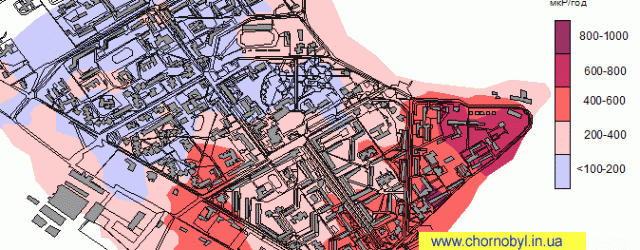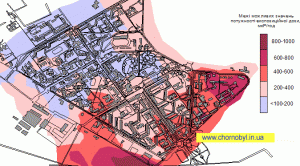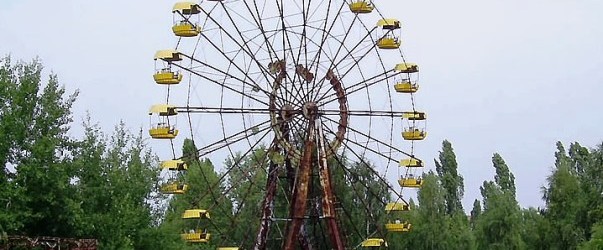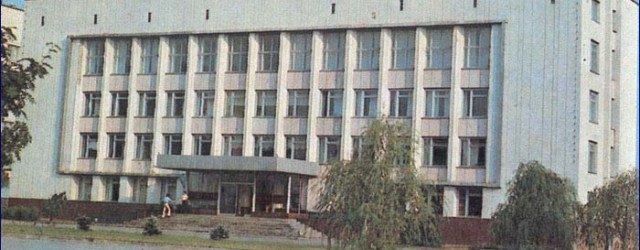
Contamination of the city by radioactive substances is quite uneven. The formation of levels of radioactive contamination of the city did not conform to the general direction of movement of the radioactive emissions, but also depended on the dispersion of radioactive clouds by buildings and structures of the city’s infrastructure. Further redistribution of radioactivity occurred in accordance with the absorbing ability of contaminated surfaces.
It is known that trees have the ability to hold dust (including radioactive) in their crowns. Scientists assumed that contamination of the city was also linked to the nature of vegetation that grew in Pripyat at the time of the accident.
It should be noted that the radiation death of plants and animals in the city was limited. According to some sources, such facts were observed on during the initial (acute) phases of the accident and involved only two sites in the city – the southeastern section and the first micro and southwestern districts 2-A.
On the map is shown the generalized pattern of radioactive contamination in the Pripyat city.
Fragment of the scheme which displays the spatial distribution of capacity levels of exposure doses in the city of Pripyat. This map is compiled from literary sources (research (measurements) took place during the period 1992-1998).
To read about the history of the creation of the city and its architecture, see the page History of the city of Pripyat. You can also see how Pripyat looks today in the the photo gallery
Reference:
Kiivschinoznavstvo. A manual is for a teacher \ For an editor. I.L.Likarchuka.K.: [Kind.O.M.], 2001. Vip.. 1. p. 295. s.
Nuclear Energy. Questions and answers. Issue 4. The drafters of the V.A. Krasyuk and Kachalov Metro. IzdAT 1993. p. 48.
Buyanov NI, Lihtarev IA, Los IP, Moiseev AA. Radioactive contamination of soil and the town of Pripyat as a result of the Chernobyl nuclear power plant accident / / Reports Second scientific those. Meeting on the outcome of the Chernobyl LPA “Chernobyl-90.” Radiation monitoring. Chernobyl, 1990, v. 1 .- ch.1., p..126-132.
Radiation monitoring Areas of alienation (A review geared-up DP of RADEK ) are // Bulletin of the ecological state of Area of alienation. Radiation monitoring of the Zone of alienation (DP Oglyad geared-up “RADEK”) / / Bulletin of ecological going of Zone of alienation. February 1997 4(9) – s.8-28. Luthi 1997 4 (9) – p.8-28.



